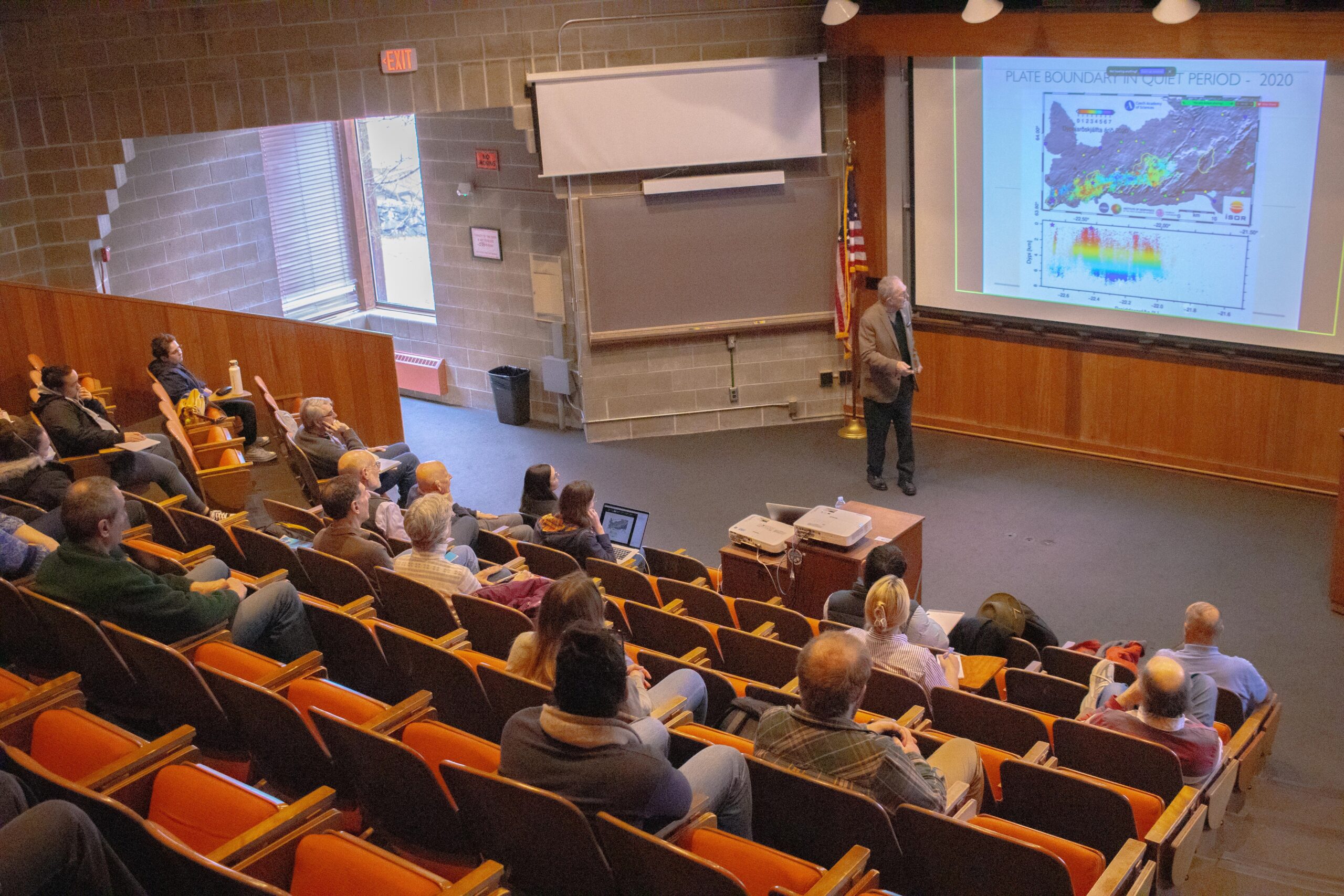The Reykjanes Peninsula in Iceland experienced a new rifting event due to the movement of the North American and Eurasian tectonic plates.
Haraldur Sigurdsson, emeritus professor of oceanography and Iceland native, spoke about Iceland’s volcanic events in a lecture on Friday in the Corless Auditorium on the University of Rhode Island Bay Campus.
The Fagradalsfjall volcano started this series of volcanic activity with an eruption that lasted from March to December of 2021.
“This is an interesting phenomenon, because the entire Reykajanes peninsula has not been active volcanically for over 800 years, and now, all of a sudden it’s gone crazy,” Sigurdsson said.
Prior to 2021, volcanologists predict the Fagradalsfjall volcano last erupted in 1260, Sigurdsson said. Iceland sits on a thermal plume, which is an area of abnormally hot rock that sits beneath the Earth’s crust. Iceland also sits on a major tectonic plate boundary which can cause over 300 earthquakes a day on the peninsula.
Iceland’s most recent eruption took place a little less than a mile away from the fishing town of Grindavik on Jan. 14.
Grindavik, which has a population of 3,800 people, was evacuated during the eruptions where large fissures were created in the Earth and magma erupted from the ground. In addition to this volcano being previously dormant, the chemical composition of the magma is different from previous eruptions.
“The magma has very interesting chemistry,” Sigurdsson said.
Sigurdsson showed the audience a graph depicting the amounts of magnesium oxide, and the ratio of potassium oxide over titanium dioxide contained in the magma.
The magma from recent eruptions contained more magnesium oxide than samples from the eruptions 800 years ago. This suggests that the magma is coming from deeper in the Earth’s crust than the previous eruptions. The magma is also very low viscosity, which is a characteristic of basalt magma, according to Sigurdsson.
Scientists are currently studying how the plate tectonics are affecting the volcanic eruptions, as the eruptions are happening closer to densely populated areas of Iceland. In a video published by Scientific American, footage of the eruptions accompanies scientists William Moreland and Armann Hoskuldsson explaining the volcanic activity.
“Today, we can only forecast two or three days into the future,” Hoskuldsson said. “You can say that there is probably an 80% probability that we will have an eruption, but we don’t know when it’s going to be, and we cannot nail down where it’s going to be.”
This is concerning for Iceland, as half of the population lives on the Reykjanes peninsula.
The eruption in January resulted in no fatalities, but three houses were destroyed in Grindavik. Some of the fissures that have formed from the eruptions are large enough to drive into, and are tens of meters in depth, Sigurdsson said.
“It will have a major impact on reconfiguring Iceland’s landscape, economy, and tourism,” Sigurdsson said. “I don’t know what’s going to happen next, except we know that this will continue around the peninsula for many years to come.”





